Hi Readers! Here’s the Oct. 27 installment of my bird photography outing. It was probably the most active single day shoot for me in 4 years of shooting birds. I’ve posted 37 photos below, so grab a cup of coffee or diet soda, or beer, and I hope you like something here!
After several days of rain here in the Pacific Northwest– some really heavy–the blue skies and sunshine are welcome as I pull into the refuge parking lot. There are some high cirrus clouds overhead but that’s about it.
I have one bean bag that hangs in the window of the truck door–this is a necessary piece of equipment when shooting birds from a vehicle. Mine’s a Vertex Molar Bag and really works great. I’m planning on making a small pillow-shaped bean bag for the other window since the truck won’t accomodate a Molar Bean Bag with my wooden stool right up next to the passenger door. The stool makes it so much easier to shoot out the passenger’s side door of my truck. I need to devise a different bean bag format for this other side!
Before taking off in the truck, I notice the moon high against the blue sky so I shot a few frames of it for the heck of it. I tried getting the moon behind some geese flying over but no luck.
By 8:00 a.m., I am ready to roll, around the 4.2 mile auto tour of the Ridgefield NWR, River S Unit.
In the berry bushes between posts #4 and 7, I spot some Golden-crowned Sparrows. The background is busy but the light was nice as the sun had just peaked over the ridge. This is possibly an immature bird. I blurred the background a little more in Photoshop to smooth it out.
[I strongly recommend that you click on these small photos to see a much larger and more detailed view. Thanks!]
This and most of the photos posted in this blog were taken at f6.3. I’ve been asked by readers what primarily determines the aperture setting I use when shooting birds. About 99% of the time I am between f5.6 and f7.1. If light is abundant, I’ll stop down to f7.1 or occasionally f8 on close shots to stretch the depth of field (DOF) a little more. On far away shots, such as BIF, I will open up to f5.6 or f6.3 since DOF is already stretched further because of the further distance from the subject. This, of course, also allows a faster shutter speed (SS) which is always good for BIF shots. I also take into consideration the size of the bird–a large bird requires a greater DOF than a small bird assuming you want the whole bird in focus. When I shoot with flash, since I control the light, I can stop down to f7.1 or f8 (or even smaller) to get more of what I’m shooting in focus.
Update: 1/24/2014 – Now that I shoot with an f4 lens, there are times I will use f4. But the above paragraph still holds true for a lot of shots.
So to determine your aperture, consider distance from the bird, the size of the bird, the bird’s orientation to the camera, the amount of light you have on the bird, even the color of the bird and background brightness, and the shutter speed you need to get the desired effect. That sounds like a lot but the more you practice shooting in different situations, the more automatic your ability to choose the right aperture will become.
Next, I eye a Pied-billed Grebe in the water off to the right but the light hadn’t hit that area yet and 1/60 of a second for a moving bird is just not fast enough! Sure, I could open up to f5.6 and crank my ISO up to a big number, but the fact I’m already shooting in a shady area is just going to exacerbate the noise situation on top of the high ISO setting. We’re all pretty familiar with those dark areas of the image being the real problem areas for noise!
Driving just past the Ducks Unlimited sign, between post # 7&8, I see three Sandhill Cranes amongst hundreds of geese in the field to the left. Too far out for anything exciting but then the cranes took flight. Here’s one of the frames:
The above shot was taken using +1/3 exposure compensation (EC), which was a mistake! I remember that I wasn’t expecting the birds to fly and it caught me off guard. I should have quickly dialed in a +2 or so EC when I took this. I paid for it in post processing when I had to boost some fill light on the birds, which created more of a noise problem, which in turn, creates a sharpness problem. Just an example of one that should have been better.
Just around the next curve past the Kiwa Trail entrance to just before the entrance to the Ash tree forest, there ‘sits’ a female Harrier on a branch off to my left. The bird is much farther than I would like and getting a decent shot is unlikely. But the light on this lady was fabulous. So I sit there with the camera on my bean bag for a good ten minutes, hoping she might fly and I could get some lift off shots. Long story short–she didn’t fly but here’s a view of what I was looking at.
I got a little impatient with the harrier and drove ahead about 50 feet and noticed some small bird activity in the brush off to my right. I stopped and moved the bean bag over to the passenger’s window even though I had to lay it on its side.
While I’m stopped in the middle of the road like this (it’s very narrow here), I check my side rear view mirror often to see if another refuge visitor is approaching from behind. While I will take a few shots if someone is behind me, I don’t like holding them up for long, so I’ll move and let them by, then return to my spot hoping the birds are still there. For now, the coast is clear and I wait for small birds to pop up on unobstructed perches. I saw an array of small birds at this location.
First off is the Spotted Towhee:
Lincoln’s Sparrow:
Song Sparrow:
It’s been quite a while since I’ve gotten a shot of a Lincoln’s Sparrow so I’m pleased! After the action subsided here, I looked back over to the left at the harrier on the perch and she is still there–glad I moved on to get the small birds because she would have wasted my time waiting for her to fly!
Traveling on around the tour, I get past post #13 just about around the big curve and I hear the familiar honks of the Sandhill Crane. At this point, I’m facing west with the sun at my back (exactly how I like it!) and the cranes, one or two at a time, are flying right at me, then bank off northbound giving me some opportunities that I never thought I’d see. It’s like they were giving me a free air show or something! Below are two of the many shots I captured of these gorgeous monstrosities.
I mentioned earlier in some of my prior blog entries that I was having a challenging time with my bird in flight (BIF) shots with the Canon 7D. Today I decided to try the Zone AF setting on the camera, which divides the 19 AF into zones with between 5 and 9 AF points in each zone. I opted for the center zone which has 9 AF points, 3 rows of 3, arranged in a square shape in the viewfinder. In AI Servo mode, several of the points blink on and off as you point at the bird in flight. While it’s always possible that one of the AF points will focus on the wrong part of the bird–like a wing tip–there is also a good chance one will focus on the head or eye. I still had a lot of OOF BIF images but the percentage of those in fairly good focus went up noticeably, from my last couple of outings. This has given me more confidence that I might not be wasting my time shooting BIF’s! One can always hope! I’d love to hear how other photographers are setting their AF systems to achieve the best BIF’s and if they have any other tips that can help us folks who are having trouble. Please comment if you would like!
Six species photographed on my first loop around the refuge! I’m really pleased with the amount of activity today and the variety of birds that are being presented. Starting loop #2, I see several cars are stopped near post #1, admiring a Great Egret that does not seem to be afraid of anything. The bird is just off the road on the left, and once I approached, only 20 feet from my camera. The lighting here is from the left since I’m facing south, so it’s a little tricky. I took some shots at ISO800 just to see how the 7D would do in this situation.
Things get quiet again until just after post #10, on the cattails to the left. Great lighting here and a Marsh Wren poses for me. These guys are noisy but they are hard workers!
As I continued on, I again came across a Sandhill Crane in flight past post #13 near the open field area. I think I like the two shots above better than this one–better lighting on those other two. The SHC’s have been super cooperative today!
I drive quite a ways past post #14 on the home stretch, and out in the middle of the field on the left is a small wooden fence structure. I see a bird on one of the fence posts so I stop to take the shot. I didn’t expect much from the shot since the post is a good 150-175 feet away from the road. The bird turns out to be a Northern Harrier and the shot is below.
Ok, second time around and I’ve photographed 2 more species. I’m a happy camper at this point with a total of 8 species so far.
Third time around the loop and it’s pretty quiet until just after post #9 in the Ash tree forest. A Red-tailed Hawk is making a lot of noise and lands across the water to the right, near where I took the Kingfisher last week. A beautifully colored bird but sitting in not-so-good light. Here’s the shot, such as it is!
Another RTH near post #10 on the left. This bird had just caught a snack. Poor little rodent.
Here is a link to the video of the above hawk eating the mouse. Not necessarily for the squeamish!
Another hawk shot.
The hawks were out in force today but they weren’t in very good locations for photos.
On to post #11, where off to the left in the shallow water, I see a family of Nutrias. I don’t usually shoot these rats but I did this time. The little ones are kind of cute!
Also in the water, a little further out, are three Yellowlegs. The nice day was reflecting some blue sky in the water giving a pleasing water color. The first photo has the bird flipping his catch in the air. [Again, this is a lot better in large view!]
As I pull around Rest Lake, I had earlier, stuck on my 1.4X converter. So when this gull flew by, I was forced to focus manually. Not the best circumstances for me! I quickly took the converter back off since the area I’m in now (west side of Rest Lake) is “BIF Alley!” I didn’t want to get caught again having to manual focus on a BIF.
As I was waiting for other birds to fly by, I heard an unfamiliar bird call from the right side of the road on the ground. [Oh, by the way, by now it is about 12:45 p.m. and more clouds have rolled in reducing shadows to almost nothing but still fairly light out–great shooting conditions since I now can get away with shooting to my right where the sun would normally be shining right into the lens.] I hear the sound coming from my right and behind me, so I back up a ways, toward the calling bird, and notice a male Western Meadowlark singing away in the grassy field, about 30 feet off the road. I’m quite pleased as I haven’t seen a Meadowlark in many months. The bird stays there singing away for about 3 minutes and I take some shots. Then he flies down the field behind me again, but not too far. I again back up and then find a female. I still want to get a Meadowlark up on a natural perch instead of the ground but this is better than nothing!
Speaking of light, especially that of the sun, another reason I like this time of the year (fall/winter) is because the sun doesn’t rise as far up into the sky as it does in the summer (at least this is true for us who live in the more northerly locations). Generally, the lower in the sky the sun is, the better for bird photos. Another good reason to shoot lots of photos during the cold part of the year! (Of course, in the southern hemisphere, you folks have this better lighting during our spring and summer months).
Five more species–13 in all so far.
The start of my 4th and final loop for the day and I see another RTH off to the right near post #2. But the distance of the bird did not yield a very good picture.
Continuing on up the straightaway toward the hunter’s gate and between posts #3&4. I notice an American Kestrel doing some hunting on the right side of the road across the slough. There’s a small, lone, bush across the slough that the kestrel happened to land on, so I drive up as close as I dare and shoot some frames of him perched at the top of this small bush, about 6 feet off the ground. He has to be at least 30 feet away from me –pretty far for a 400mm lens.
Then the bird suddenly lifts off almost right toward me, aiming for a spot on the ground between me and the bush. I hit the burst and hope for the best. I got a few frames that came out better than I thought they would. These were taken at a pretty high ISO setting.
I had the ISO set to 2000 for these shots and got a shutter speed of 1/2500, 1/3200, and 1/3200, respectively. I did the best I could to take care of the noise in post processing. In a future blog entry, I plan to post my post-processing workflow. One of the most critical parts of post-processing is sharpening and noise reduction and I hope to get some feedback on whether I can improve my shots in post-processing. I am always open to improved methods that will make my images look better.
I also got a super faraway shot of the kestrel eating his catch. It wasn’t worth posting–just too heavy of a crop.
As I head on past the blind parking lot and come to the Ducks Unlimited sign, I notice some small birds off to the left right next to a metal gate there. I pull in there and park and wait. During the next half hour, I saw and photographed a Golden-crowned Sparrow, House Finch (a little too far away for a decent shot), White-throated Sparrow (a lifer for me), White-crowned Sparrow, Juvie Golden-crowned Sparrow, and a Song Sparrow. Here are pictures of each one.
Golden-crowned Sparrow:
Golden-crowned Sparrow, possibly immature:
White-throated Sparrow — a lifer for me! Note the Golden-crowned Sparrow blurred in the background:
A shy White-crowned Sparrow. Too bad about the branch but this is the only chance I had to get a shot of him:
Another pose of the White-throated Sparrow. What a pretty sparrow:
Another shot of the Golden-crowned Sparrow, possibly immature:
A juvenile White-crowned Sparrow:
Song Sparrow:
After the mother lode of sparrows, I drive on and don’t see much else until I get to just before the turn at post #12. There’s a Great Blue Heron not far off the edge of the road to the left. This head shot is pretty much full frame:
Here are a couple of shots of a Northern Harrier against the white sky. My last shots of the day.
Four more species on the 4th loop and that makes 17 photographed species of birds or animals (if you don’t count the mouse) in one day. I’ll have a tough time beating that!
In addition to my photo shoot outings, I plan to discuss some other subjects in future postings, such as camera settings, custom functions, and post-processing workflow.
I know when I started this blog I stated that my blog entries should get shorter–that was a miscalculation. They seem to be getting longer with each week! It all depends on my success out shooting. Thanks for visiting and taking the time to read through my photo shoot adventures!
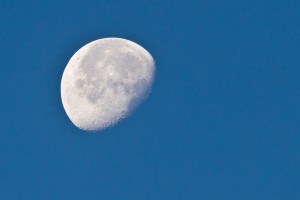
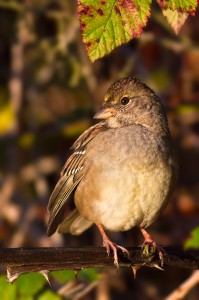
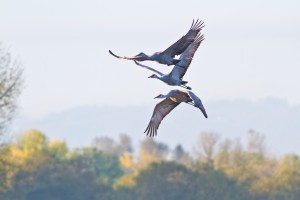
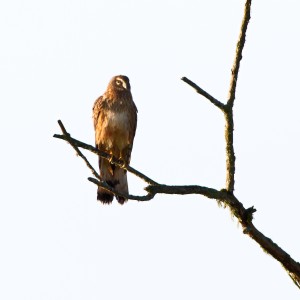
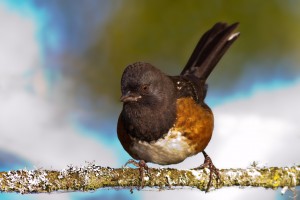


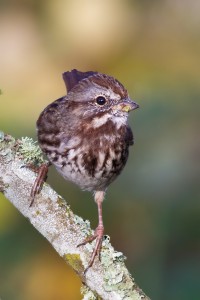

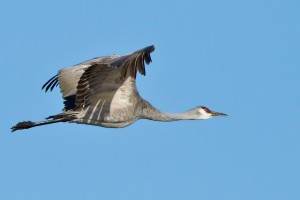


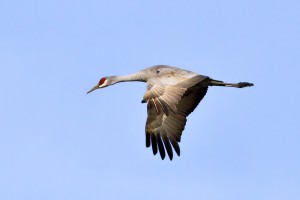
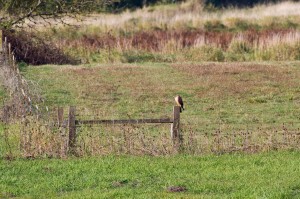


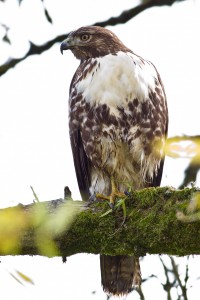
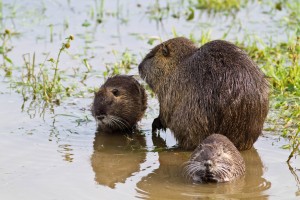
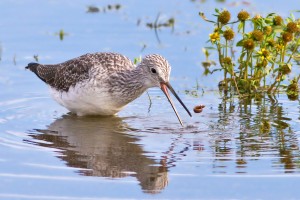


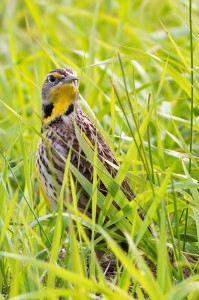
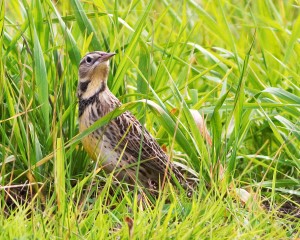
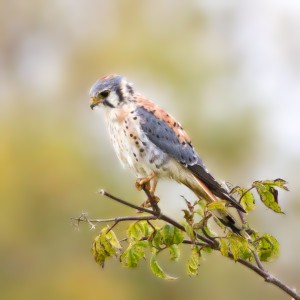
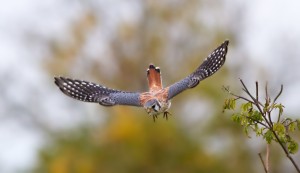
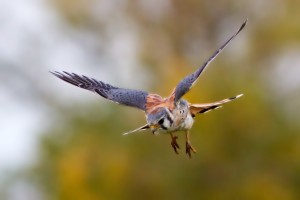

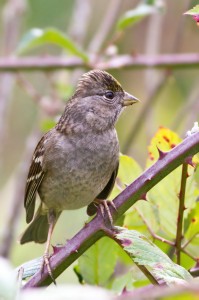
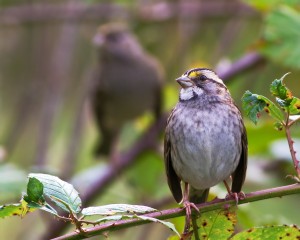
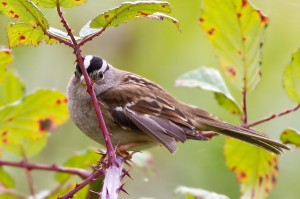
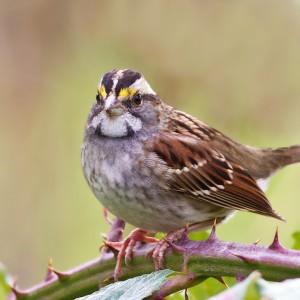
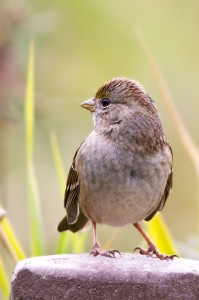
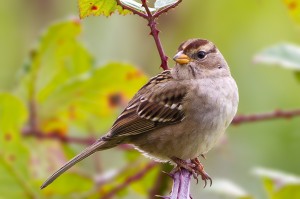
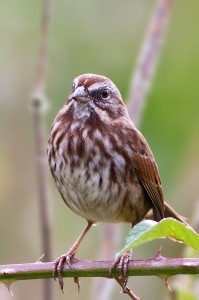
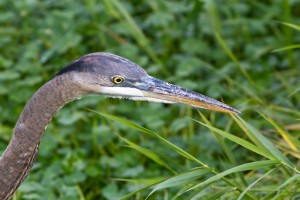
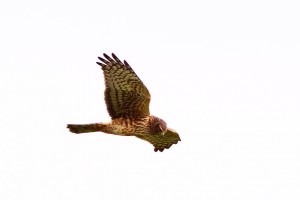
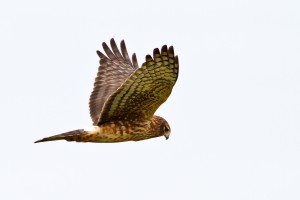
Sounds like you had an awesome day, can’t wait for the next break in weather so I can head out there. Your first shot of the Gold Crowned Sparrow in the morning is AWESOME, the detail on the eye and face is perfect! Great shots of the white throated sparrows too, I have never seen one before! Nice post!
Hey Arman! Thanks for stopping by! It looks like Tues-Thurs are shaping up to be nice days at the refuge–not sure which day I will make it though. Thank you for the nice words on the sparrow shots! It’s always exciting to see a new species, let alone get a shot of it. As I was looking at the WTS thru the viewfinder, I could tell he was something I hadn’t gotten before and had to look him up in the book to see what he was! It goes to show we just never know what we’re going to see at the refuge on a given day!
Man, Papa…I don’t know where to start! What an awesome day you had! I have GOT to get out there this week or next! First, the moon shot…ROCKED! So beautiful against the blue sky. I love how the craters and other markings just pop. Glad you took a moment to snap a few of it! Your sparrow shots are amazing (as always). I’m so happy you got a white-throated to add to your list. What a cool looking sparrow. I love, love, love your yellowlegs flipping his meal. I commented on that photo already, but I really do think it looks like calendar material! 🙂 Awesome catch on those SHC BIF shots! I’ve never been quite that close to them before, so it’s a treat to see them in your pics! Neat kestrel BIFS too…glad he gave you the opportunity to get him diving for breakfast!
I love that you post pics that chronicle your day, even if they don’t make the “featured slideshow” cut. They’re still awesome, and they really add to the reading experience! Thanks for taking the time to share your day (and your pics) with everyone, Papa! I know it takes a lot of your time! Glad you had such an EXCELLENT day! 🙂
Thank you for checking out my blog Kimi and for such a generous review! I think I took over a thousand frames on this day–my average is probably 500 or so in a day. Also glad you liked the pictures!
Really great photos! But I think your image of the juvenile Golden-crown (IMG_3799…) is actually a White-crowned Sparrow. Check the yellow bill and distinct brown and white stripes on the head.
Kerry, you are correct! Thanks for finding that error. That may have been my first sighting of one and I was probably guessing–not good! I have taken other photos of these birds and I now know better. Thanks for checking in!